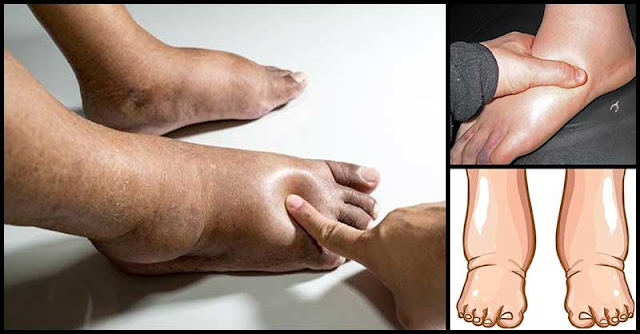There are several factors that may cause swelling of our feet, ankles, and legs. Though it’s not a main cause of concern, it makes us feel uncomfortable, thereby wanting us to reduce the swelling.
Britt H. Tonnessen, MD, a Yale Medicine vascular surgeon, says:
“If there’s just a little swelling at the end of the day, that’s very common and probably nothing serious. But if it’s starting to progress, where you’re noticing there’s more swelling after a few weeks or months, if the swelling is only in one foot or leg rather than both, or if there’s any association with shortness of breath, you should see a doctor.”
Reasons Why Our Feet Become Swollen
Varicose Veins
One can have varicose veins when the veins in the leg weaken over time and lose elasticity. Due to this, the valves in the veins that propel the blood back to the heart can’t work efficiently, thus the blood pools causing swelling of the feet and ankles, and red and blue veins on our legs.
To provide help, one should lose some weight, exercise regularly, wear compression stockings, and elevate the legs for 15 minutes a few times a day.
Sitting All Day
Dependent edema, swelling that is related to gravity, can be acquired if our nature of work requires us to sit most of the time or we are laid up because of injury or difficulties with mobility.
To bring our feet back down to size, we need to prop up on a pillow at the end of the day. A compression sock can also help counteract swelling. Moreover, having regular breaks, stretching exercises, frequent position changes, or a quick self-massage of the legs can help reduce the accumulation of fluid in the tissues.
Infection
An infection might be the reason behind swollen feet and ankles. Those individuals with nerve problems of the feet or with diabetic neuropathy are at higher risk for a foot infection. For those who have diabetes, daily inspection of the feet is advised. Be aware of the blisters and sores because nerve damage can worsen them as well as the pain sensation.
Too Much Salt Consumption
Too much sodium intake causes our body to retain water which in turn, causes puffiness and swelling.
Always check the labels of foods before buying as they may contain high amounts of sodium. We should consume no more than 2,000 to 2,400 milligrams of sodium per day.
There May Be A Blood Clot
Deep vein thrombosis (DVT), a blood clot deep in the tissue, may cause sudden swelling of the leg. People who experience a DVT should consider wearing compression stockings to promote blood flow or elevating the affected legs. DVT must be treated immediately to prevent the blood clot from traveling to the brain, heart, or lungs.
Pregnancy
During pregnancy, a woman’s body retains more fluid. A little swelling is just normal as the growing belly puts more pressure on her pelvic floor, leading to increased pressure on the blood vessels in her legs. Swelling can be alleviated by wearing comfortable shoes, exercising, and staying hydrated. However, if swelling is accompanied by nausea, blurred vision or headaches, a doctor must be immediately contacted as it could be a sign of pre-eclampsia which is a potentially dangerous condition.
Side-Effect of PMS
Swollen hands and feet can be caused by hormonal changes from your menstrual cycle. Have a regular exercise, cut down on sodium, and stay hydrated to get rid of excess fluid in the body.
Heart Diseases
Swelling and feet edema may be a sign that your heart is weak and pumps blood less effectively. This results in fluid build-up which can possibly accumulate in the heart.
Kidney Diseases
Our kidneys are responsible for removing waste from the body. But due to kidney diseases, the body is unable to get rid of excess fluid, leading to weight gain and swelling of the eyes and legs.
An Injury
Having fractures in our foot may cause pain, swelling, and fluid retention since all the extra blood and fluid is helping our foot to heal.









